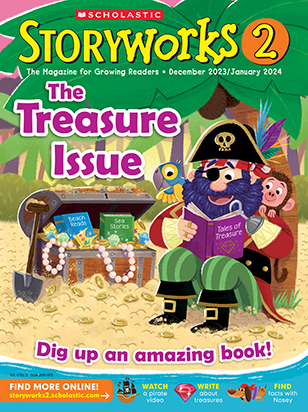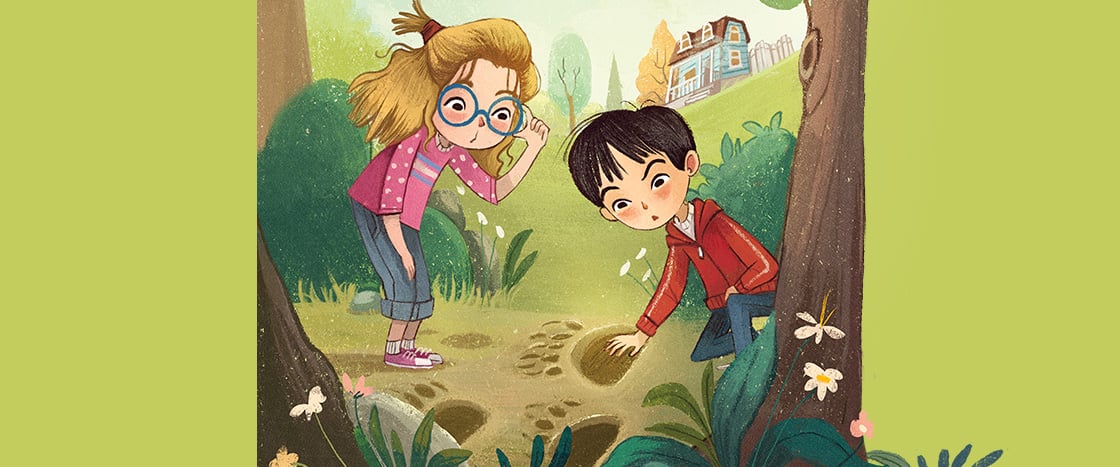Allie and Logan know they are great explorers. Every day after school, they run straight for the woods behind their houses.
They are always finding amazing things. They just know that one day, they will find something no one has ever seen before.
Today, Allie is walking in front of Logan. Then she stops.
“Hold up,” she says. She bends down.
“What is it?” asks Logan.
They stare at tracks in the mud. The tracks look like giant paw prints. They have lines at the top of them.
Logan puts his hand next to one of the prints. “This is way bigger than my hand!” he says.
They follow the tracks. What animal could have made them?
“This is a mystery,” says Allie.
“They could be mountain lion tracks,” says Logan.
“They could be raccoon tracks,” says Allie.
“Those would be some BIG raccoons,” says Logan.
“They could be bear tracks,” says Allie.
“The tracks are so big and strange,” says Logan. “What if they’re from a new kind of animal that no one has ever seen before?”
The kids look at each other.
“If we discover a new kind of animal,” says Allie, “we’ll be famous.”

